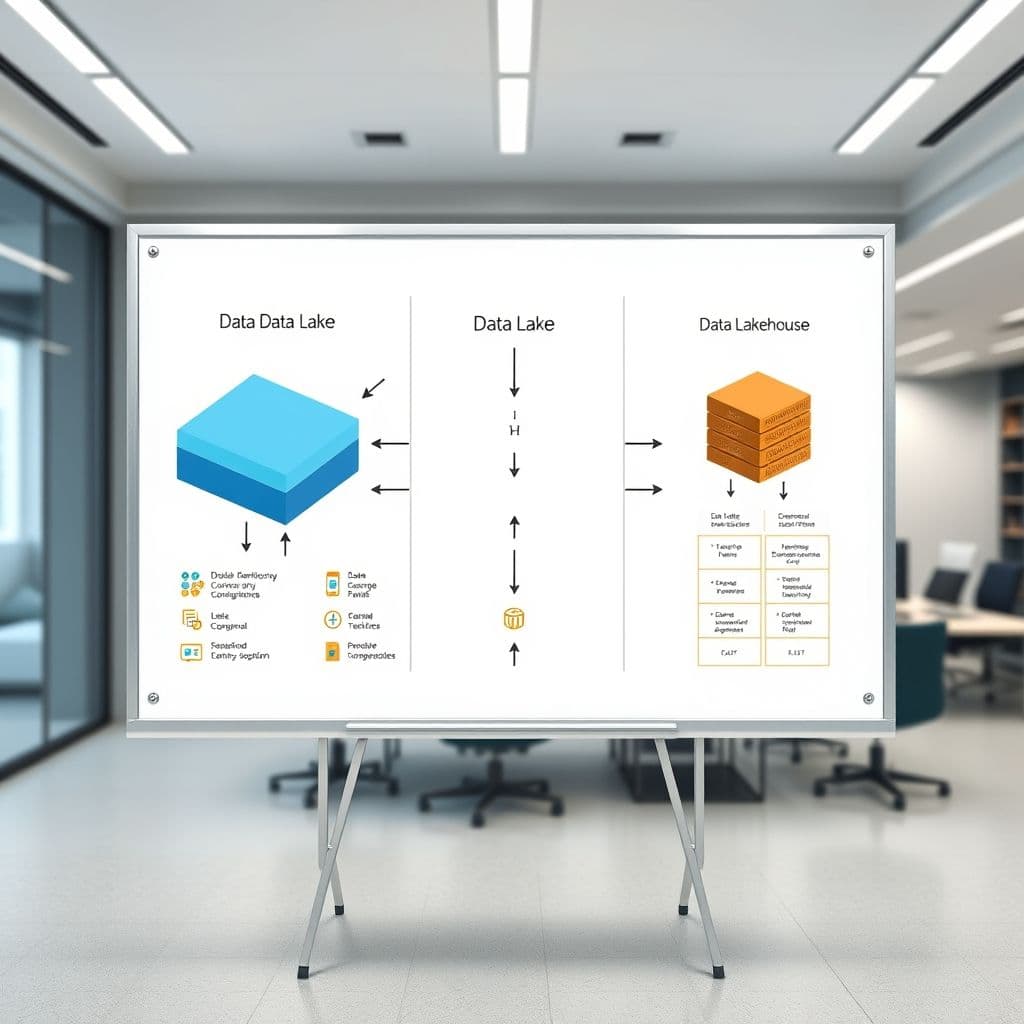Mastering Data Lakehouse: A Comprehensive Guide for Modern Data Management

In today's data-driven world, managing vast amounts of information efficiently is crucial. The Data Lakehouse architecture emerges as a powerful solution, combining the best features of Data Lakes and Data Warehouses. This guide will walk you through the fundamentals, technologies, and best practices to master Data Lakehouse and leverage its full potential for your data needs. View original learning path
Step 1: Understand the Basics of Data Lakehouse
Before diving into Data Lakehouse, it's essential to grasp its foundational components. A Data Lake is a vast repository that stores raw data in its native format, offering flexibility but often lacking structure. In contrast, a Data Warehouse stores processed, structured data optimized for analytics but can be rigid. The Data Lakehouse bridges these two by providing the scalability of a Data Lake with the reliability and performance of a Data Warehouse, enabling both raw data storage and efficient analytics.

Step 2: Learn the Fundamentals of Data Lakehouse Architecture
A robust Data Lakehouse architecture consists of four key pillars: Data Ingestion, where data is collected from various sources; Data Storage, which organizes data efficiently; Data Processing, where transformations and computations occur; and Data Governance, ensuring data quality, security, and compliance. Together, these components create a scalable and reliable system for handling diverse data workloads.
Step 3: Familiarize Yourself with Data Lakehouse Technologies
Several open-source technologies power Data Lakehouse implementations. Apache Hadoop provides distributed storage and processing capabilities. Apache Spark offers fast, in-memory data processing. Apache Hive enables SQL-like querying, while Apache Delta Lake brings ACID transactions to Data Lakes. Mastering these tools is crucial for building and managing an effective Data Lakehouse.

Step 4: Understand Data Lakehouse Best Practices
To maximize your Data Lakehouse's effectiveness, follow these best practices: Implement Schema Evolution to handle changing data structures gracefully. Use Data Partitioning to optimize query performance. Prioritize Data Lakehouse Security with proper access controls and encryption. Finally, continuously monitor and optimize performance through proper indexing and caching strategies.
Step 5: Gain Hands-on Experience with Data Lakehouse
Practical experience is key to mastering Data Lakehouse. Start by setting up a basic environment using tools like Delta Lake on Spark. Practice data ingestion from various sources, perform transformations, and run analytical queries. Learn to monitor system health and performance, and implement maintenance routines to keep your Data Lakehouse running smoothly.
Step 6: Explore Advanced Data Lakehouse Concepts
Once comfortable with the basics, explore advanced capabilities like Real-time Data Processing for instant insights. Implement Machine Learning pipelines directly on your Data Lakehouse. Learn to integrate with other systems like BI tools or streaming platforms. Finally, design for Scalability and High Availability to ensure your solution grows with your business needs.
Conclusion
The Data Lakehouse represents a significant evolution in data architecture, offering the best of both Data Lakes and Warehouses. By understanding its components, mastering key technologies, and following best practices, you can build powerful, scalable data solutions. Whether you're dealing with batch processing, real-time analytics, or machine learning workloads, a well-designed Data Lakehouse can meet your diverse data needs efficiently.
Frequently Asked Questions
- How is a Data Lakehouse different from a traditional Data Warehouse?
- While both support analytics, a Data Lakehouse combines the flexibility of storing raw data (like a Data Lake) with the structure and performance optimizations of a Data Warehouse, all in a single system.
- What are the main benefits of using a Data Lakehouse?
- Key benefits include reduced data silos, support for diverse workloads (including AI/ML), cost efficiency, and the ability to handle both structured and unstructured data at scale.
- Which companies commonly use Data Lakehouse architectures?
- Many tech-forward organizations across industries use Data Lakehouse, particularly companies dealing with large volumes of diverse data, such as e-commerce platforms, financial services, and healthcare analytics firms.
- How difficult is it to migrate from a traditional Data Warehouse to a Data Lakehouse?
- Migration complexity varies but typically involves planning for data movement, schema adjustments, and process changes. Starting with a hybrid approach can ease the transition.





